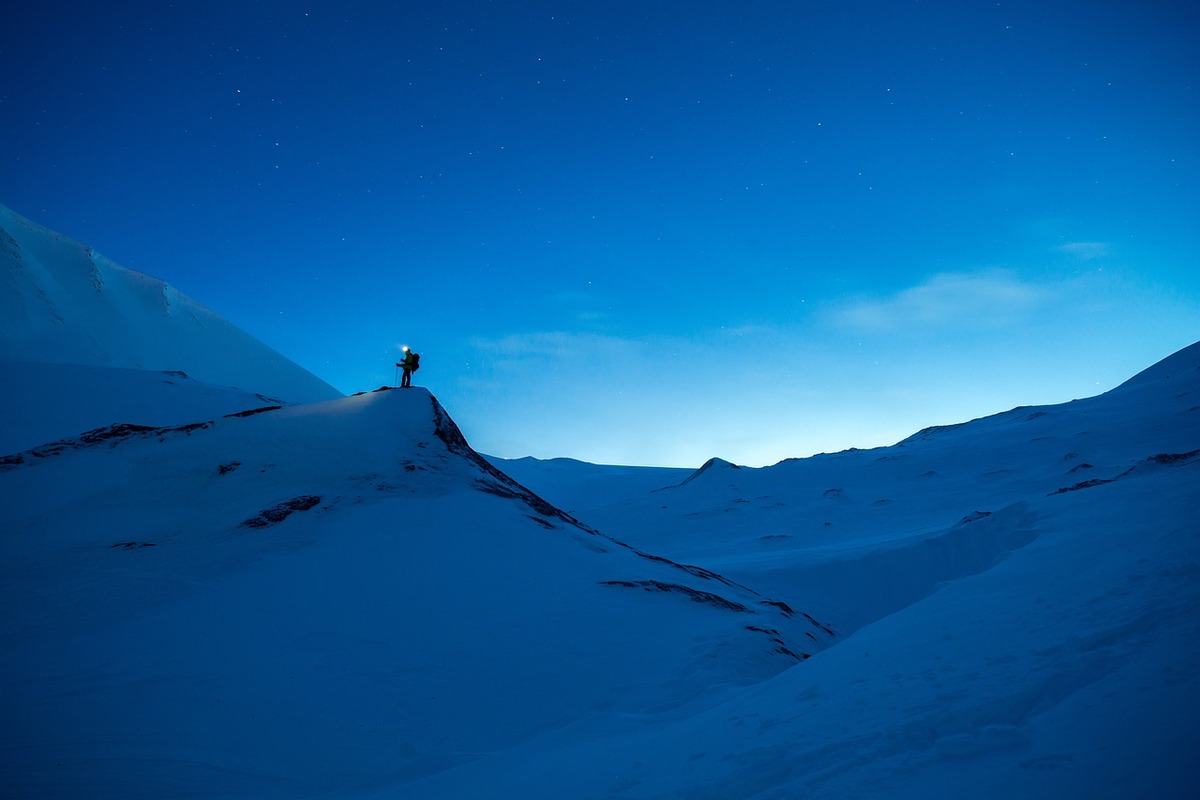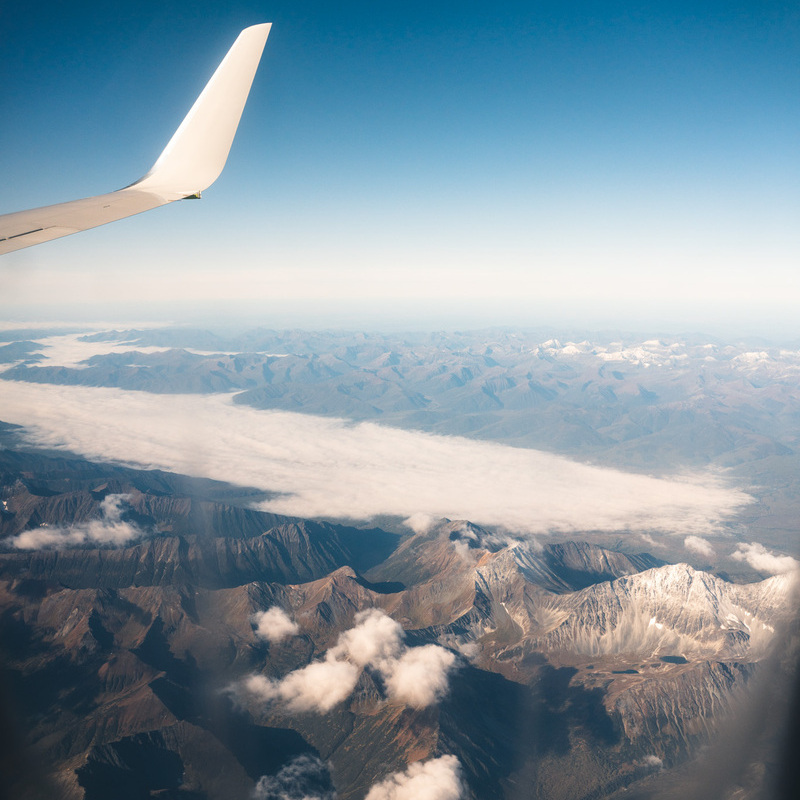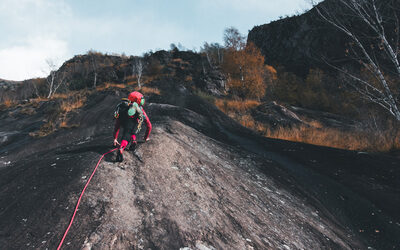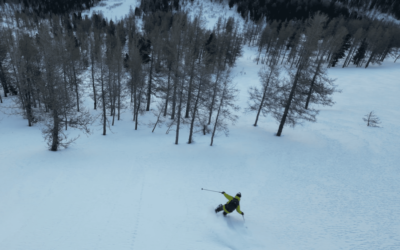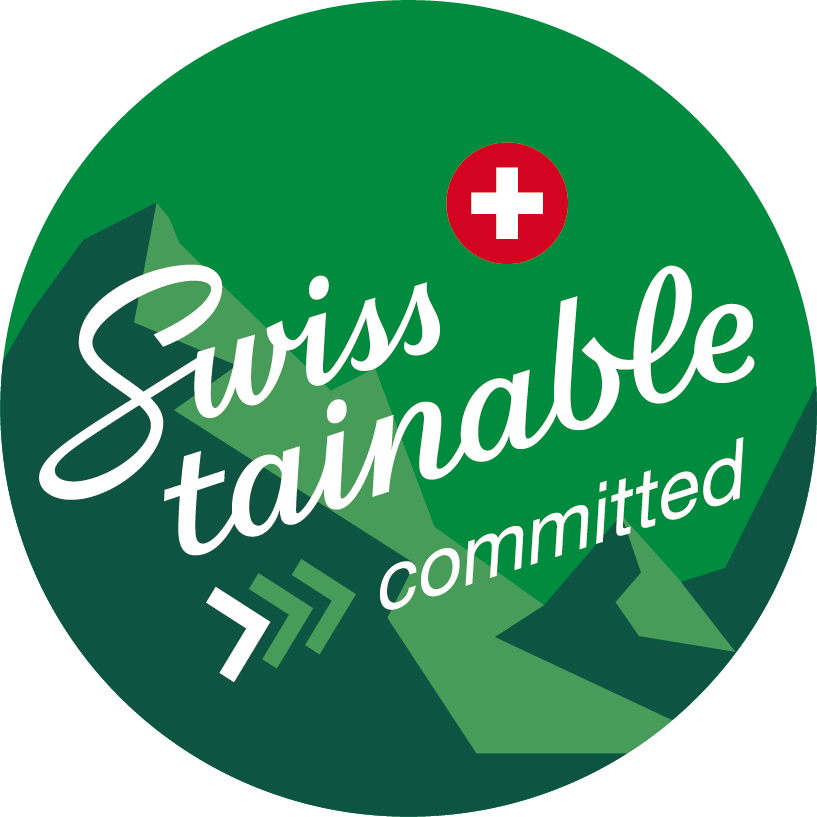SKI AND SAIL SVALBARD
Trip type: Ski touring and Freeride, Splitboarding
Duration: 8 days
Country/Region: Norway, Longyearbyen
Price: from 5’500,00 CHF p.P.
Participants: 5-8
Dates
or on request
A ski and sail experience between the bays of majestic Svalbard and under the midnight sun is something unforgettable in winter. We combine the joy of ski touring and splitboarding with the beauty of the coastal landscape of these islands, between 78 and 79 degrees latitude. We spend a week on a sailing ship and start our ski tours in search of the best deep snow, directly from the drop-off point on the beach! With a bit of luck, we might spot polar bears, seals and whalefishes. An adventure in the far north for enthusiastic ski tourers!
Requirements:
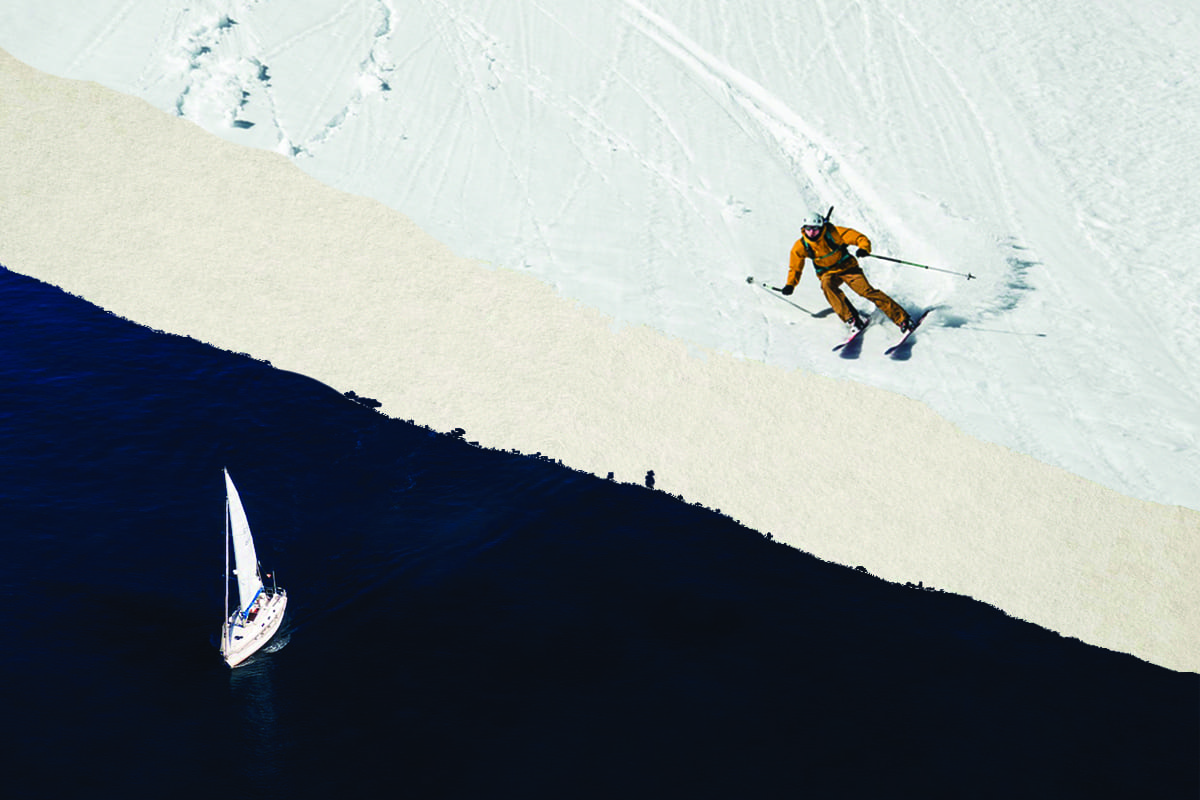
Ski technique

Average
Kick turns

Experience advantageous
Alpine technique

First experience advantageous
Fitness

Generally fit for medium length tours
Use of crampons and ice axe

No experience necessary
Ski and Sail in Svalbard, between Longyearbyen and Ny Alesund – Ahoi Captain!
The mountain ranges in the far north of the Svalbard Islands, between Longyearbyen and Ny Alesund, offer the best conditions for challenging descents with fjord views and glacier landscapes every winter. The best way to explore these fjords at your own pace is on a ski and sail trip, where we choose a sailing ship as our “home” for a week. An experienced skipper and his small crew are with us on our “exploration of the bay”, accompanying us every day with the best food and tips on the descents. An experienced mountain guide selects the best descents with us and accompanies us on the ski tours with sea views every day. The views are hard to beat, because with a bit of luck we may even spot marine animals such as whales and seals, or even the famous polar bears. When we visit these magical islands between Norway and the North Pole, we also get to experience the midday sun, which gives us long days and enjoyable descents.
First, we sail from the port of Longyearbyen inland, where there are various ski tours of moderate difficulty. The descents usually reach up to sea level with constant slopes, which means: get off the sailing ship in the morning, put on your skis and only take them off again when you reach the coast again. The rugged mountain slopes around the Nordfjord are partly criss-crossed by glaciers. Examples of tours we will visit are Daudmannen and Konowfjellet, two exciting peaks with sea views.
There are countless ski tours along the Forlandsundet, from easy to challenging, which we will tackle. The typical ascents in the area are between 4 and 9 km long and take between 4 and 8 hours. The slope gradients are mostly below 25-30 degrees above the glacier plateaus, but there is the possibility of reaching up to 40 degree powder snow slopes should we opt for gorges and steeper downhill variants.
In the evening we enjoy the tranquillity of the sea in the selected bay, in an intimate atmosphere we joke with like-minded people about the wonderful day’s skiing and enjoy a glass of wine with a view of the deep snow slopes. A first-class adventure between the 78th and 79th parallel!
On „First Line“ chase on the Svalbard Islands
In the Longyearbyen area you will not only find untouched slopes and powder snow at its best, but also a unique sailing experience, the finest food and fantastic views of the fjords and the sea.
Your benefits with Exped Tribe:
Local and multilingual mountain guide
Support member
who will document the trip with professional recordings and look after your well-being. You will receive drone videos, photos and much more as a souvenir of your adventure.
Small groups
of max. 8 participants. Increased flexibility, familiar atmosphere and harmonious get-together. We do our best to ensure that all participants have an incredible adventure! We conduct expectation phone calls and pool participants who have similar expectations and abilities. We are happy to accept special requests!
Vegetarian friendly
We offer Alpine gourmet cuisine, completely without meat/fish!
Co2 compensation
Planting of several trees per participant. You will receive a certificate of your trees and will be able to follow their growth.
Rental materials
Cost-effective rental materials such as sleeping bags, climbing equipment and much more are available.
Planned itinerary for the Ski and Sail trip to Svalbard
Day 1
Arrival from Zurich or Milan by plane. If desired, we can also organize a train journey. We fly via Oslo to Longyearbyen, where we are taken directly to the harbour.

Day 2-7
Every day we alternate sailing sections of 2-3 hours with crisp tours directly from the jetty or from the beach, which we reach by dinghy. On good weather days, we naturally prefer ski touring to sailing, whereas bad weather days are ideal for covering longer distances, which allows us to climb the most challenging lines and peaks.
Day 8
Sailing back to Longyearbyen, city tour and return flight to Switzerland
Important information about your ski and sail trip to the Svalbard Islands
Included
- UIAGM mountain guide
- Overnight stay on the “floating hut”, Exped Tribe’s private sailing ship
- Half board on the sailing ship
- Transfers
- Professional photo reportage and videos
- An activity to support the local community
- Group material
- Co2 compensation with the planting of 10 trees/participant
Excluded
- Travel to and from the destination country
- Private insurance with repatriation costs covered
- Food on the day of travel and tour provisions
- Alcoholic beverages
- Tips for skipper crew
- Everything that is not listed under “Included”
Catering
- Snacks (not included, serves to replenish energy levels): This is eaten between breakfast and dinner and taken with you for the appropriate number of days. Dried fruit, chocolate, cheese, wholemeal bread and energy bars are all suitable. Remember that your rucksack should not be too heavy.
- Half board (included): Out of commitment to animal welfare, we do not offer fish/meat on our tours. Nevertheless, you can of course order what you like best at the local restaurants, whether vegetarian or animal-based
Rental material
- Ski touring set: skis, ski bindings, skins, CHF 250.00
- Avalanche airbag, CHF 120.00
- Helmet, CHF 30.00
Others, Add-ons
- If desired, this adventure can be supplemented with an overnight stay in Longyearbyen and a city tour;
- On request, luxury accommodation with sauna can be offered on the last evening in Longyearbyen;
Clothing
- Hard shell jacket
- Spare underwear (the warmest you have)
- Warm ski touring pants, warm base layer and sweater
- Soft shell or fleece jacket
- Hat, gloves, balaclava
Miscellaneous
- Sunglasses
- Ski goggles
- Sun and lip cream
- Water bottle and thermos flask
- Camera and power bank if necessary
- Backpack (30-50l)
Technical equipments
- Helmet
- Skis with ski touring bindings
- Telescopic poles
- Climbing skins
- Crampons
- LVS set (avalanche transceiver, shovel, probe)
- Avalanche airbag, if available
- Light ice axe
- Crampons
- Climbing harness
For the overnight
- Hut sleeping bag
- Headlamp
- Toiletries (reduced to a minimum)
Q&A Travel to Svalbard
Best time to visit
The best time to go ski touring on Svalbard is between mid-April and June. The snow conditions are usually very good during this time and the midnight sun is already shining during the day.
Things to see in and around Longyearbyen
- Longyearbyen (capital of Svalbard): Longyearbyen is the largest settlement and capital of the Norwegian archipelago of Svalbard in the Arctic Ocean. It is considered the northernmost city in the world, located at latitude 78°13′ north. Its unique location makes for extreme Arctic conditions with long, dark winters and short, intense summers. The area around Longyearbyen is rich in Arctic wildlife, including polar bears, reindeer, foxes and numerous bird species. Polar bear patrols are necessary in the town to avoid human and animal conflicts. A trained person will also be on site on our ski tours to avoid conflicts with polar bears.Longyearbyen has its roots in coal mining, which began in the early 20th century. The area was developed by the American John Munro Longyear, and mining shaped the region’s economy for a long time.
- Svalbard Global Seed Vault: Longyearbyen is home to the Svalbard Global Seed Vault, also known as the “Doomsday Vault”. Here, seeds of plants from all over the world are stored in a highly secure vault to preserve genetic diversity for the future. It’s definitely worth a visit when we visit the islands!
- University in the Arctic: The University Settlement Svalbard (UNIS) in Longyearbyen is the northernmost university in the world. It offers degree programs in Arctic biology, geophysics, geology and more, and its research contributes to the understanding of the unique Arctic environment.
- Aurora Borealis: Due to its low light pollution and geographical location, Longyearbyen offers optimal conditions for observing the Northern Lights. The Aurora Borealis is an impressive natural spectacle during the winter months.
- Permafrost and darkness: Longyearbyen is located in a region with permafrost, where the ground remains frozen all year round. In winter, the town experiences a long period of darkness, while in summer the midnight sun lasts for around four months.
Things to see in and around Ny Alesund
- Ny Alesund: Ny-Ålesund is a small settlement on Spitsbergen, the largest island in the Norwegian archipelago of Svalbard in the Arctic Ocean.It is considered the northernmost permanently inhabited settlement in the world. This distinction makes it a unique place with extreme Arctic conditions.
- Research station: The settlement is primarily a research station and has a long tradition as a base for scientific research. Research institutions from various countries use the favorable location to conduct studies in the fields of glaciology, meteorology, biology and geophysics.
- Historical starting point for expeditions: Ny-Ålesund has served as the starting point for famous Arctic expeditions, including the flights of Roald Amundsen and Umberto Nobile with the airship Norge, which was the first airship to reach the North Pole in 1926.
- Svalbard Rocket Range: The Svalbard Rocket Range rocket station, operated by the Norwegian Space Agency, is located in Ny-Ålesund. Research rockets are launched from here to study the aurora borealis and the upper layers of the atmosphere.
- Global Atmosphere Watch Station: Ny-Ålesund is also an important station in the Global Atmosphere Watch program of the World Meteorological Organization (WMO). Comprehensive measurements are carried out here to monitor the global atmosphere.
- Arctic flora and fauna: The surroundings of Ny-Ålesund offer unique Arctic flora and fauna. Visitors can observe reindeer, Arctic foxes and a variety of bird species. The flora is characterized by arctic flowers and mosses.
Culinary delights
On Svalbard, the extreme climatic conditions and the limited availability of agricultural resources influence the local cuisine. Here are some examples of foods that are typically consumed on Svalbard:
- Arctic fish: Fresh fish from the ice-cold waters of the Arctic is an important source of protein. Species such as Arctic cod and Greenland halibut are often found on menus.
- Seafood: In addition to fish, seafood such as crabs, prawns and mussels are also part of the local cuisine. They are caught fresh from the surrounding waters.
- Vegetables: Due to the extreme climatic conditions, the cultivation of vegetables is limited. Nevertheless, some varieties are grown in greenhouses, including potatoes, carrots and cabbage.
- Berries: Although the variety of species is limited, there are some berries that grow in the Arctic tundra. Examples include cloudberries and blueberries, which can be used in desserts or as an accompaniment to meat dishes.
- Bread and baked goods: Bread and baked goods are usually imported, as it is not possible to grow grain due to the short summer and harsh climate.
- Due to limited agricultural production, much of the food on Svalbard is imported. The local cuisine therefore reflects a mixture of traditional Arctic ingredients and international influences.
Historical perspective
The history of Spitsbergen, also known as Svalbard, is characterized by its discovery and exploitation by various nations and the race for economic resources. Here are some important milestones in the history of Svalbard:
- Early discoveries (17th century): The first documented discovery of Spitsbergen was probably made in the 17th century by Dutch sailors. At this time, the commercial fur trade began with the hunting of Arctic foxes, seals and walruses.
- Russian presence (18th century): In the 18th century, Russia showed interest in Spitsbergen. The Russian Pomor expedition established a temporary whaling station on Grumant Island. However, Russian influence was limited.
- Mining activities (19th century): From the 19th century onwards, Spitsbergen became a center for coal mining. Norwegians began to mine coal, which led to increased interest from the Norwegian government in controlling the islands.
- Svalbard Treaty (1920): After the end of the First World War, the Svalbard Treaty was signed in 1920. This multinational treaty stipulated that the archipelago would remain under Norwegian sovereignty, but that citizens of all contracting parties could engage in economic activities there.
- Second World War: During the Second World War, parts of Spitsbergen were occupied by German troops. The Nazis were interested in the coal deposits and fighting broke out between Allied and German troops. Spitsbergen was eventually liberated by Allied forces.
- Post-war period and Cold War: After the Second World War, Spitsbergen remained an important region in the Cold War. The geopolitical situation led to the USA and the Soviet Union operating signal reconnaissance stations on the island.
- Research and protection (20th century): Spitsbergen developed into an important center for scientific research in the 20th century. International research stations were established and the region played an important role in research into climate change and the Arctic.
- Tourism (from the 1990s): In recent decades, tourism on Svalbard has increased. Visitors come to experience the unique Arctic landscape, the wildlife and the Northern Lights.
The history of Svalbard is characterized by changing geopolitical influences, mining activities and an increasing importance as a research and tourism destination. The Svalbard Treaty remains an important document regulating international cooperation and use of the archipelago.
SKI AND SAIL SVALBARD
Search for the perfect powder between Longyearbyen and Ny Alesund. Explore the bays by sailing boat, ski tour under the midday sun and learn more about life on the water Book nowRecent Trips
Find out more about our unique and amazing experiences.
Edelrid: new rope party with Exped Tribe
Today we are proud to present our new partner for technical equipment Edelrid! The Edelrid brand needs no introduction to mountaineers and climbers: founded in 1863, the rope factory is now known worldwide for its high-quality equipment, whether for ice climbing,...
Freeride Airolo: How the cozy Ticino ski resort is becoming a Swiss freeriding mecca
Have you ever heard of Airolo? Then it's about time you got to know this small Ticino ski resort! Because in recent years, Airolo has developed into a true paradise for freeride enthusiasts.Introduction: Airolo, the new Swiss Mecca for freeride enthusiastsThe...
Affiliate Partner Program: A Clear recommendation!
Our mission at Exped Tribe is to enable adventurers and like-minded people to not only make new friends while traveling together, but also to experience unforgettable moments off the beaten track. Discover the adventure of a lifetime with Exped Tribe in exotic...

